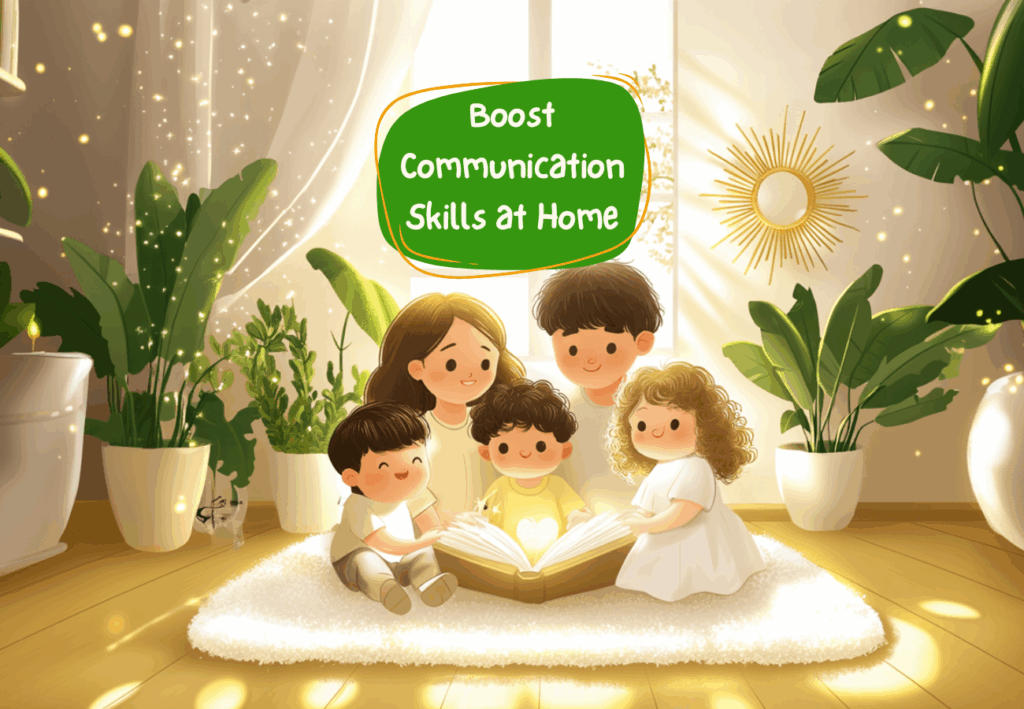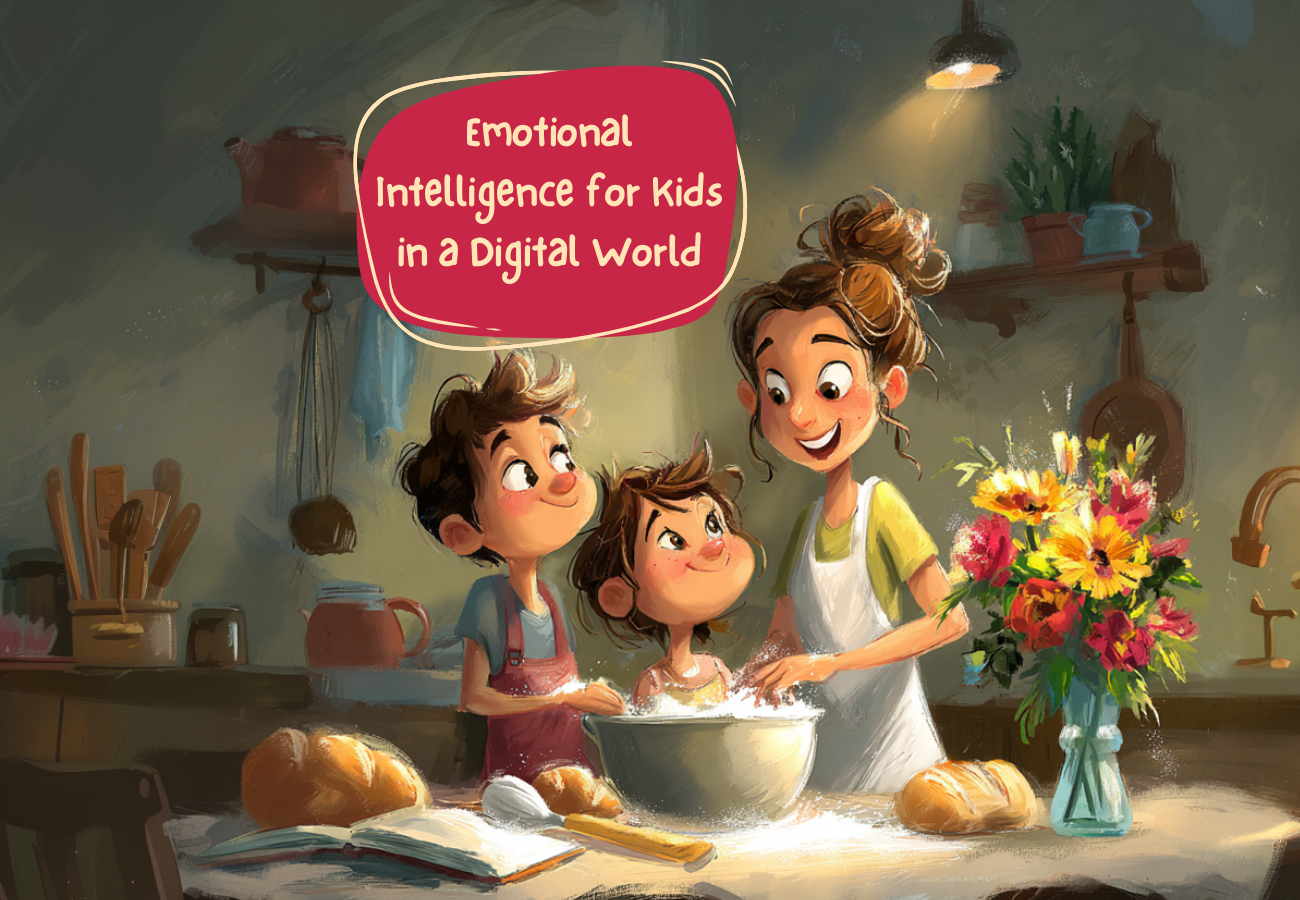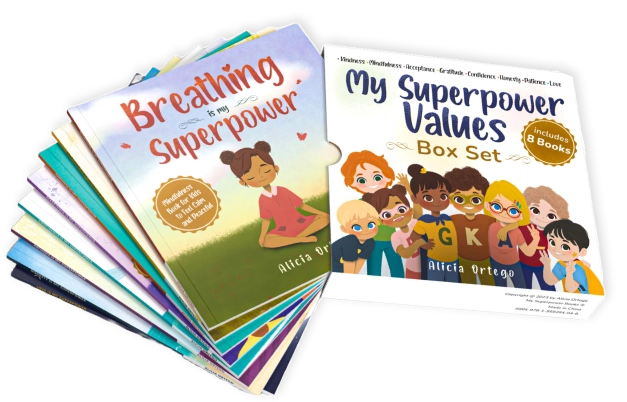Tips for Parents to Boost Their Child’s Communication Skills at Home

Effective communication forms the foundation of a child’s academic success, social relationships, and emotional well-being. However, for many children, mastering these skills presents a significant challenge.
According to recent data, nearly 1 in 12 U.S. children aged 3–17 has experienced a disorder related to voice, speech, language, or swallowing within the past year. Among them, a significant percentage experience multiple communication or swallowing disorders. The highest prevalence is seen in children ages 3–6, where 11% are affected, highlighting the importance of early support.
As a parent or caregiver, your involvement plays a crucial role in helping children strengthen their communication skills.
This article offers practical tips to create a language-rich environment at home, whether your child is developing typically or faces communication challenges. With intentional support, parents can make a lasting impact on their children’s ability to express themselves and connect with others.
1. Create a Language-Rich Environment
Surround your child with books, magazines, and age-appropriate reading materials in various locations throughout your home. Create cozy reading nooks where family members can enjoy time with books, and display alphabet charts, word walls, or vocabulary cards in common areas.
Incorporate music, nursery rhymes, and word games into your daily routines; these enhance memory and verbal expression. Singing together or making up stories promotes creativity and conversation.
Additionally, according to the National Literacy Trust, imaginative play is also key to language development. It allows children to explore new vocabulary, express ideas, and build confidence by imitating real-life conversations. Outdoor play provides additional opportunities, as children often speak more freely and enthusiastically in open spaces.
For quieter children, being outside can spark newfound confidence and a stronger desire to communicate.
2. Engage in Daily Conversations
Daily conversations offer powerful opportunities to support your child’s communication development. According to Parents magazine, use these tips for effective conversation:
- Pick the right moment: Avoid starting deep conversations when your child is tired, hungry, or decompressing.
- Pay attention: Put away devices and make eye contact to show you value the conversation.
- Be an active listener: Nod, ask clarifying questions, and give your child time to think and respond.
- Model communication: Demonstrate how to express thoughts, listen actively, and resolve conflicts constructively.
- Ask open-ended questions: Encourage thoughtful responses beyond “yes” or “no.”
3. Read and Tell Stories Together
Regular reading sessions provide powerful opportunities to enhance multiple communication skills simultaneously. Choose books slightly above your child’s current reading level to introduce new vocabulary and complex sentence structures. Discuss story elements such as characters, settings, problems, and solutions to develop comprehension and analytical thinking skills.
Encourage your child to predict what might happen next in stories, ask questions about character motivations, and relate story events to their own experiences. These discussions build critical thinking skills while expanding vocabulary and improving verbal expression abilities.
Create opportunities for your child to become a storyteller by encouraging them to make up their own stories or describe their daily experiences in narrative form. Provide story prompts, picture cards, or props to inspire creativity and support their storytelling efforts.
Implement family storytelling traditions such as sharing daily highlights during dinner conversations or creating ongoing stories where each member contributes a sentence. You can also set aside special times for children to present their own creative stories to the family, encouraging expression and confidence.
4. Use Technology and Communication Tools
While too much screen time can hinder communication development, intentional use of technology can support language growth. Choose interactive apps and games that promote verbal engagement, critical thinking, and creativity instead of passive screen use.
Video calls with relatives are another valuable tool. These conversations help children practice verbal expression in real-world settings while building social confidence.
Encourage them to ask questions, share stories, and use eye contact during calls.
Age-appropriate podcasts and audiobooks can expose children to new vocabulary, storytelling styles, and interesting topics. Follow up by discussing what they’ve heard to reinforce learning.
Additionally, according to Forbes, AI tools like CogniToys Dino use natural language processing to engage children in conversation, aiding vocabulary development. Apps like Replika can also give parents insight into their child’s emotional expression, helping them better understand feelings and communication patterns during development.
5. Recognize When to Seek Professional Support
While many children naturally develop strong communication skills in supportive home environments, others may benefit from professional guidance. Speech pathologists, also called speech-language therapists, are specialists trained to assess and treat a wide range of communication disorders in children.
Speech pathologists’ job responsibilities include evaluating speech, language, and social communication skills. They also design individualized therapy plans and work closely with families to support progress at home and in educational settings.
You may consider consulting a speech pathologist if your child struggles with clear speech, has a limited vocabulary, or has difficulty following directions. Early intervention often leads to more effective outcomes and supports better long-term communication development.
According to Ithaca College, individuals interested in becoming speech-language pathologists can pursue a Master of Science in Speech-Language Pathology. The program covers child and adult language disorders, therapy delivery systems, relevant legislation, and research methods to support evidence-based clinical decision-making.
6. Build Confidence and Social Skills
Communication involves more than words. It’s also about confidence, emotional awareness, and social connection. Help your child feel safe experimenting with language by encouraging speech without fear of criticism. Celebrate their efforts, even when words aren’t perfect, to build self-assurance and a love for communication.
Teach social cues like facial expressions, tone of voice, and gestures through role-play, storytime discussions, or games. These help children recognize emotions and express themselves more clearly in real-life situations.
A powerful example of this can be seen in a viral Motherly video featuring 15-month-old Annie. Her confident replies to rapid-fire questions, like naming her favorite color and best friend, demonstrate impressive cognitive and communication skills for her age.
Experts suggest that such development is strongly linked to a nurturing, interactive environment. This reinforces how regular, engaged communication at home plays a vital role in promoting both language growth and social-emotional confidence.
Frequently Asked Questions
Can parents do speech therapy?
Parents can’t replace professional speech therapists, but they can support therapy at home. With guidance from a qualified speech pathologist, parents can practice exercises, model correct speech, and reinforce communication strategies daily. Home practice enhances progress and improves overall outcomes, making parental involvement a valuable complement to formal speech therapy sessions.
What is the best age to start speech therapy?
Speech therapy can be effective at any age, but it works best when started early. For children, begin at around 2–3 years if delays appear. Early intervention yields better outcomes, but older kids and adults also benefit significantly from targeted therapy tailored to their needs. Professional evaluation guides timing.
How to handle a restless child during storytelling?
To handle a restless child during storytelling, keep sessions short and engaging. Use animated voices, interactive questions, or props to hold attention. Let the child choose the story to boost interest. Allow movement breaks if needed, and maintain a relaxed atmosphere to make storytelling a positive, pressure-free experience.
The strategies outlined in this article can be adapted to suit your family’s unique needs, schedules, and interests. Consistency matters more than perfection, so focus on incorporating these practices into your daily routines rather than creating additional pressure or structured lessons.
By maintaining a supportive, language-rich environment and seeking professional guidance when needed, you’re providing your child with invaluable tools for lifelong success.
More articles

Individual vs. Team Sport Activities for Your Kids: Pros and Cons
Helping children stay active and healthy often starts with sports. But deciding between individual or team sports can be tricky. Each type offers unique experiences and developmental benefits, but also has potential drawbacks. Understanding the differences can help you make informed choices based on your child’s personality, interests, and abilities. What Are Individual Sports? Individual […]

How to Nurture Your Child’s Emotional Intelligence in the Digital Age
Raising children today is nothing like it was in the 90s. Children in the 90s spent the majority of their time playing outdoors with neighbors or going to the local library or the beach. In that era, screen time mostly centered around TV, cable, or video games. But things are quite different in 2025. Kids […]

Summer Books for Kids – Best Picture Book Picks
Summer is filled with sunshine, adventures, and long afternoons that are perfect for reading. If you’re looking for summer books for kids, this guide will help you choose stories that bring fun and meaning to the season. Why Summer Books for Kids Are a Great Choice A few carefully chosen kids summer books can: Best […]



